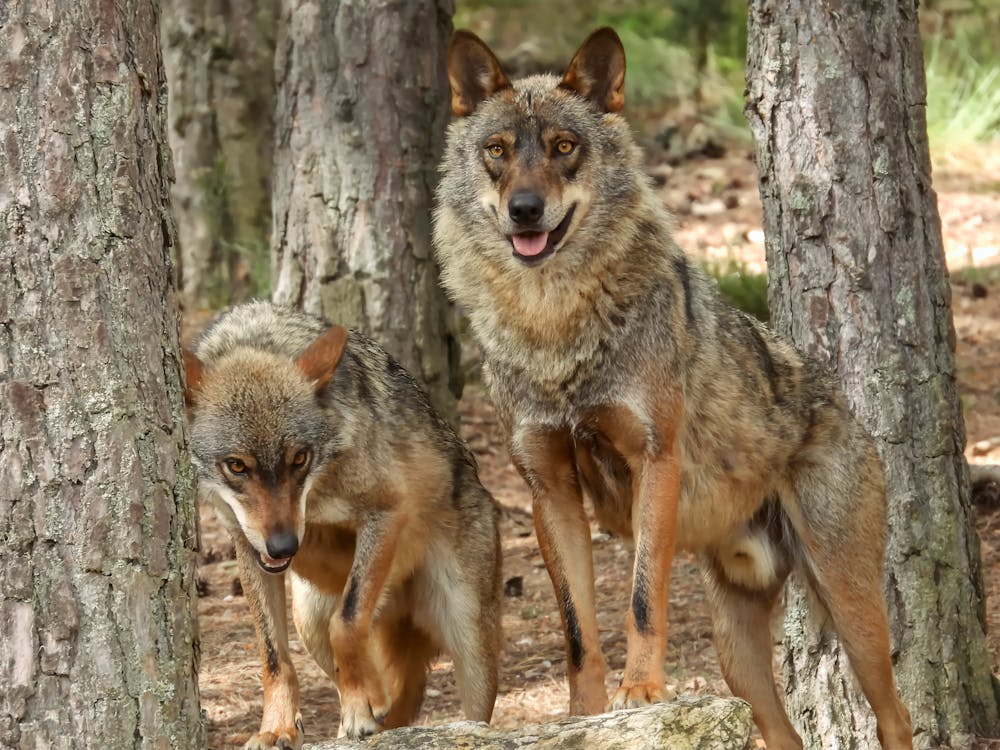Wolves, with their haunting howls and complex social structures, have long captivated human imagination. Beyond their iconic presence in folklore, literature, and films, wolves play a critical ecological role as apex predators. An apex predator sits at the top of the food chain, having no natural predators of its own, and controls the structure and dynamics of ecosystems through a phenomenon known as “trophic cascades.” In this article, we explore how wolves, as apex predators, shape wilderness ecosystems and the far-reaching impacts they have on biodiversity, habitat health, and environmental balance.
1. Trophic Cascades: Wolves and the Balance of Nature
The presence of wolves has a profound effect on the entire ecosystem, a process known as a “trophic cascade.” This concept refers to the impact that predators at the top of the food chain have on the populations and behaviors of species at lower levels, which in turn influences the broader environment. For wolves, the most famous example of their influence on a trophic cascade comes from Yellowstone National Park, where wolves were reintroduced in 1995 after being absent for nearly 70 years.
Before the reintroduction, elk populations had skyrocketed, unchecked by predators. These overpopulated elk grazed heavily on young trees and shrubs, particularly willows and aspens, leading to a decline in forest regeneration and degradation of riparian areas. With wolves back in the ecosystem, they began to hunt elk, which not only reduced the number of elk but also altered their behavior. Elk began avoiding certain areas, such as riverbanks, where they were more vulnerable to wolf predation. As a result, vegetation in these areas began to recover, and species like beavers, birds, and fish benefited from the restored habitat. This chain reaction is an example of how wolves, by controlling herbivore populations and their behavior, help maintain healthy ecosystems.
2. Biodiversity: Wolves as Keystone Species
Wolves are often considered a keystone species, meaning their presence is critical to the integrity of their ecosystem. By regulating the populations of prey species, wolves prevent any single species from dominating the landscape. This balance helps to maintain biodiversity.
For example, without wolves to keep deer or elk populations in check, these herbivores can overgraze, leading to a decline in plant diversity. In turn, this affects other species that rely on diverse plant communities for food and shelter. In areas where wolves have been extirpated, ecosystems have often suffered from reduced biodiversity, leading to a cascade of ecological problems.
Moreover, the presence of wolves can indirectly benefit scavengers like ravens, foxes, and eagles. After a wolf pack makes a kill, the carcass provides food for other animals, creating a complex food web that supports a diverse range of species.
3. Habitat Modification: Wolves as Architects of the Landscape
Wolves not only influence populations but also change the physical landscape of the wilderness. Their predatory behavior can reshape habitats in ways that benefit the entire ecosystem. A striking example is the impact wolves have on riparian zones (the areas surrounding rivers and streams).
In Yellowstone, the absence of wolves led to overgrazing of streamside vegetation by elk, which in turn caused riverbanks to erode and reduced the quality of water. When wolves returned, their control of elk populations allowed vegetation along the rivers to recover, which stabilized the banks, improved water quality, and created habitats for a range of species such as songbirds and beavers. Beavers, in particular, benefit from the restoration of willows, which they use to build dams that further modify the landscape, creating wetlands that support even more biodiversity.
4. Wolves and Human Perceptions: Conflict and Conservation
The relationship between wolves and humans is complex, marked by both reverence and fear. Historically, wolves have been seen as a threat to livestock and, by extension, to human livelihoods, leading to widespread extermination efforts across North America and Europe. This persecution nearly drove wolves to extinction in many regions.
However, in recent decades, growing awareness of the ecological role of wolves has sparked efforts to protect and reintroduce them to areas where they have been extirpated. The reintroduction of wolves to Yellowstone and other areas is a testament to the changing perception of wolves as integral components of wilderness ecosystems.
Nonetheless, conflicts between wolves and humans, particularly livestock farmers, continue. Programs aimed at mitigating these conflicts, such as compensation for livestock losses and non-lethal predator control methods, are essential for ensuring the long-term survival of wolves in human-dominated landscapes.
5. The Global Role of Wolves in Ecosystem Health
Wolves are found in many regions of the world, from the Arctic tundra to the forests of North America, Europe, and Asia. Their role as apex predators is not limited to any one region, and wherever they exist, wolves exert similar ecological forces. In Russia, for instance, wolves help control populations of large herbivores like moose and wild boar, maintaining the health of forests and grasslands.
In Europe, the resurgence of wolf populations after centuries of persecution is providing similar ecological benefits, although the challenges of coexisting with human populations remain significant. In India, the Asiatic wolf plays a similar role in maintaining the balance of grassland ecosystems.
6. The Future of Wolves: Conservation and Ecosystem Restoration
The future of wolves and their role in shaping wilderness depends largely on continued conservation efforts and public understanding of their ecological importance. Protecting large, intact habitats where wolves can thrive is critical for maintaining healthy ecosystems. Additionally, fostering coexistence between wolves and human populations is key to their survival.
The reintroduction of wolves to places like Yellowstone and Europe has demonstrated their power to restore balance to ecosystems, but the challenges of living alongside these powerful predators remain. As apex predators, wolves are not just icons of the wilderness—they are its architects, sculpting the landscapes they inhabit and maintaining the delicate balance of nature.
Conclusion
Wolves, as apex predators, play an indispensable role in shaping wilderness ecosystems. Through trophic cascades, they regulate prey populations and behavior, which in turn influences plant communities, biodiversity, and even physical landscapes. As keystone species, wolves help maintain ecological balance and promote the health of entire ecosystems. Their presence is a reminder of the intricate interdependencies that sustain life in the wild, and their conservation is essential for preserving the natural world as we know it. In a world where human activity increasingly threatens biodiversity, the wolf stands as a symbol of the power of nature to heal itself—if given the chance.

